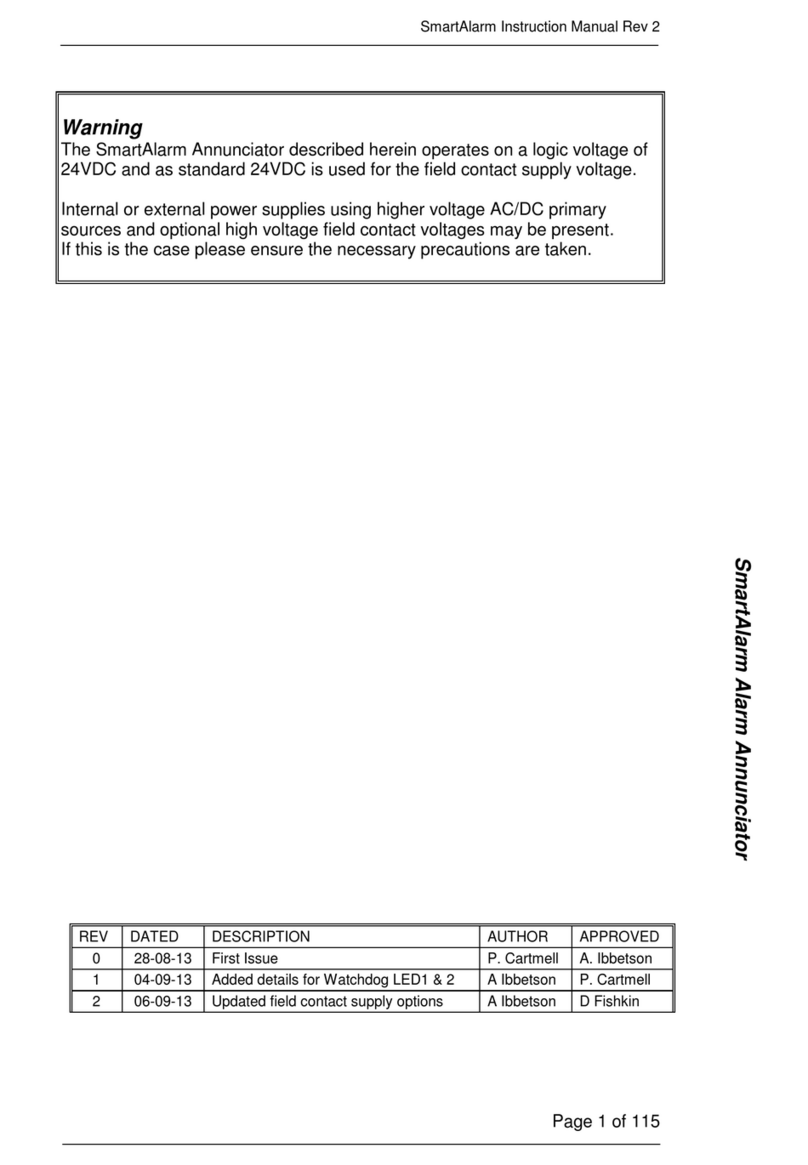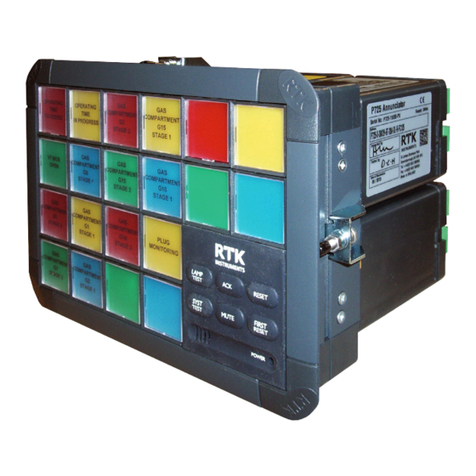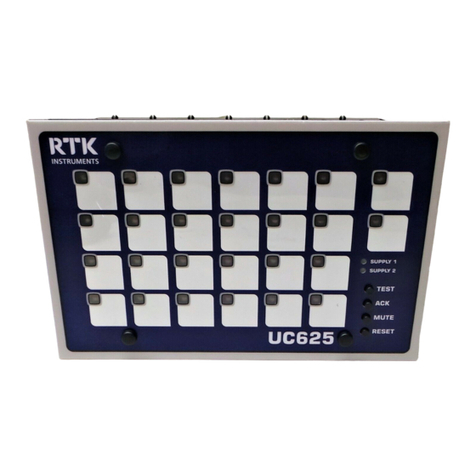
INM725 RTK Series 725 Annunciator
4
6.4 Suitable Power Supplies...................................................................................................... 29
6.5 P725 Annunciator Standard Versions.................................................................................. 29
6.6 P725 Annunciator Fitted With The Repeat Relays Per Channel Option............................... 30
7. Mechanical Details........................................................................................... 31
7.1 P725 Overall And Cut Out Dimensions (Pre June 2013) ..................................................... 31
7.1.1 P725 Overall And Cut Out Dimensions (After June 2013)................................................. 32
7.2 System Capacity.................................................................................................................. 33
7.3 Panel Mounting Clamps....................................................................................................... 33
8. Alarm Sequences............................................................................................. 34
8.1 Summary............................................................................................................................. 34
8.2 Audible Alarm Grouping....................................................................................................... 34
8.3 Ringback Audible................................................................................................................. 34
9. Additional Features......................................................................................... 35
9.1 Automatic Reset .................................................................................................................. 35
9.2 Non-Latch Sequence (No Lock-In)....................................................................................... 35
9.3 Reflash Feature................................................................................................................... 35
9.4 Ringback Sequence............................................................................................................. 35
9.5 Two Pushbutton Operation.................................................................................................. 35
9.6 First-Up Sequences............................................................................................................. 35
10. Sequence Configuration and Tables........................................................... 36
10.1 ISA-Sequence M................................................................................................................ 36
10.2 ISA-Sequence A................................................................................................................ 37
10.3 ISA-A-4 Sequence............................................................................................................. 38
10.4 ISA-R Sequence -.............................................................................................................. 39
10.6 ISA-F2M-1 Sequence ........................................................................................................ 42
10.7 ISA-F3A Sequence -.......................................................................................................... 44
11. Options ........................................................................................................... 46
11.1 General.............................................................................................................................. 46
11.2 LED Assemblies (Option LED)........................................................................................... 46
11.3 Tropicalisation (Option TRO)............................................................................................. 46
11.4 Individual Channel Repeat Relays (Option RLY) ............................................................... 46
11.5 Individual Channel Dual Repeat Relays (Option RL2) ....................................................... 47
11.6 Customer Specified Response Time (Option CRT**)......................................................... 47
11.7 Adjustable Response Time (Option AD*)........................................................................... 47
11.8 Disable Integral Horn (Option DHN)................................................................................... 48
11.9 Higher Field Contact Voltages (Option FCxx).................................................................... 48
11.10 Supply Input / Output Module (Option SI/O)..................................................................... 48
11.11 RS485 Serial Communications (Option COM) Part No. CB4468POP1............................ 48
11.12 Individual Channel Repeat Relays Powered By The Field Contact Voltage (Option RAV)48
11.13 Three Horn Relay Outputs (Option 3HN)......................................................................... 48
11.14 Three Group Relay Outputs (Option 3GP)...................................................................... 48
11.15 Repeat Pushbutton Output (Option RPB) ........................................................................ 49
11.16 Group Relays Follow Inputs (Option GFI)........................................................................ 49
11.17 Additional Group Relay Contact (Options 2GA or 2GB).................................................. 49
11.18 Total Group Relay (Option RTG) ..................................................................................... 49
11.19 SPR Module (Supply-Pushbuttons-Relay Module)........................................................... 49
11.20 Logic Power Connections................................................................................................ 49
11.21 Signal Supply Voltage Connections................................................................................. 49
11.22 Common Horn/Group/Multi-Function Relay & Remote P.B. Connections........................ 50
12. Large Window Alarm Module Wiring........................................................... 51
12.1 Standard Unit Without Repeat Relay Facility..................................................................... 51































